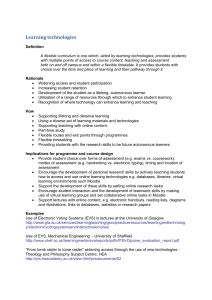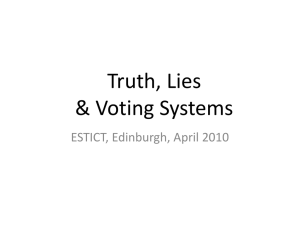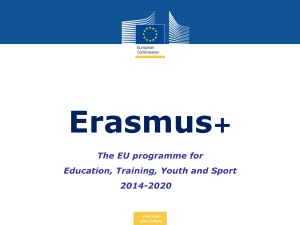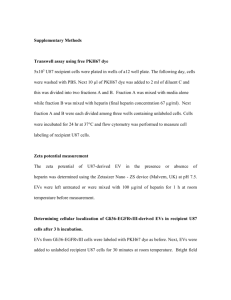Electronic Voting Systems in Engineering
advertisement
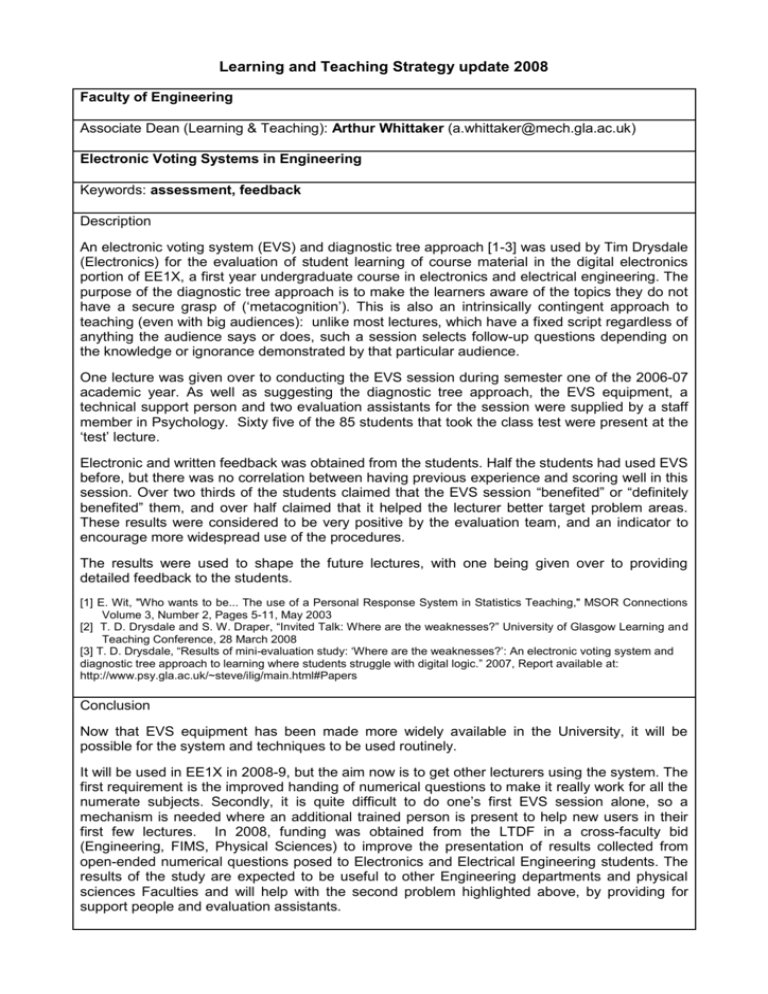
Learning and Teaching Strategy update 2008 Faculty of Engineering Associate Dean (Learning & Teaching): Arthur Whittaker (a.whittaker@mech.gla.ac.uk) Electronic Voting Systems in Engineering Keywords: assessment, feedback Description An electronic voting system (EVS) and diagnostic tree approach [1-3] was used by Tim Drysdale (Electronics) for the evaluation of student learning of course material in the digital electronics portion of EE1X, a first year undergraduate course in electronics and electrical engineering. The purpose of the diagnostic tree approach is to make the learners aware of the topics they do not have a secure grasp of (‘metacognition’). This is also an intrinsically contingent approach to teaching (even with big audiences): unlike most lectures, which have a fixed script regardless of anything the audience says or does, such a session selects follow-up questions depending on the knowledge or ignorance demonstrated by that particular audience. One lecture was given over to conducting the EVS session during semester one of the 2006-07 academic year. As well as suggesting the diagnostic tree approach, the EVS equipment, a technical support person and two evaluation assistants for the session were supplied by a staff member in Psychology. Sixty five of the 85 students that took the class test were present at the ‘test’ lecture. Electronic and written feedback was obtained from the students. Half the students had used EVS before, but there was no correlation between having previous experience and scoring well in this session. Over two thirds of the students claimed that the EVS session “benefited” or “definitely benefited” them, and over half claimed that it helped the lecturer better target problem areas. These results were considered to be very positive by the evaluation team, and an indicator to encourage more widespread use of the procedures. The results were used to shape the future lectures, with one being given over to providing detailed feedback to the students. [1] E. Wit, "Who wants to be... The use of a Personal Response System in Statistics Teaching," MSOR Connections Volume 3, Number 2, Pages 5-11, May 2003 [2] T. D. Drysdale and S. W. Draper, “Invited Talk: Where are the weaknesses?” University of Glasgow Learning and Teaching Conference, 28 March 2008 [3] T. D. Drysdale, “Results of mini-evaluation study: ‘Where are the weaknesses?’: An electronic voting system and diagnostic tree approach to learning where students struggle with digital logic.” 2007, Report available at: http://www.psy.gla.ac.uk/~steve/ilig/main.html#Papers Conclusion Now that EVS equipment has been made more widely available in the University, it will be possible for the system and techniques to be used routinely. It will be used in EE1X in 2008-9, but the aim now is to get other lecturers using the system. The first requirement is the improved handing of numerical questions to make it really work for all the numerate subjects. Secondly, it is quite difficult to do one’s first EVS session alone, so a mechanism is needed where an additional trained person is present to help new users in their first few lectures. In 2008, funding was obtained from the LTDF in a cross-faculty bid (Engineering, FIMS, Physical Sciences) to improve the presentation of results collected from open-ended numerical questions posed to Electronics and Electrical Engineering students. The results of the study are expected to be useful to other Engineering departments and physical sciences Faculties and will help with the second problem highlighted above, by providing for support people and evaluation assistants.

